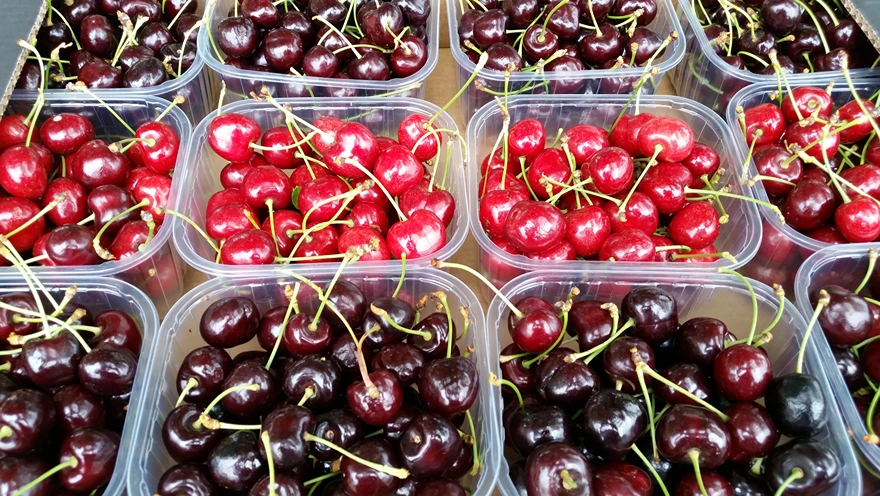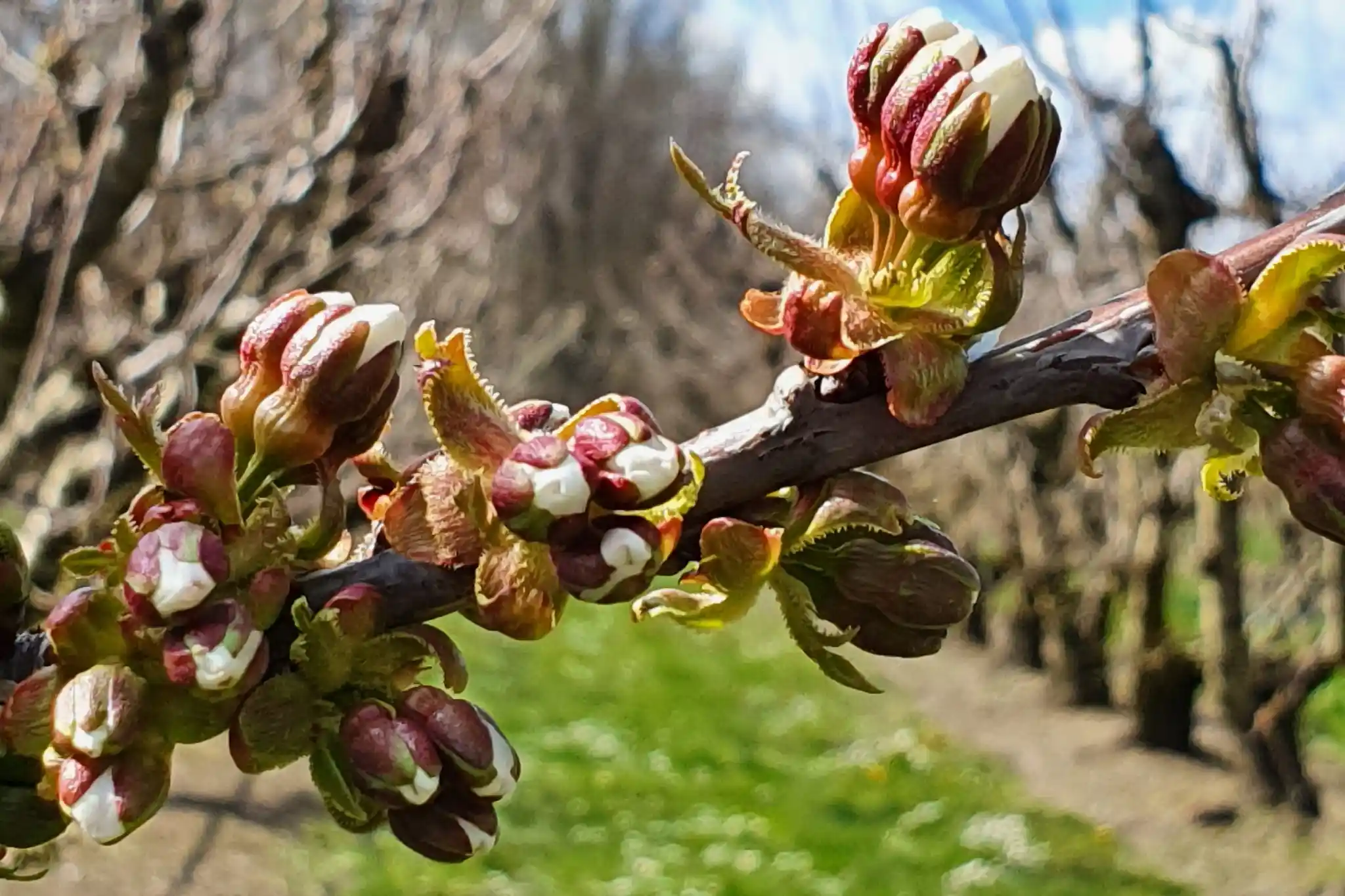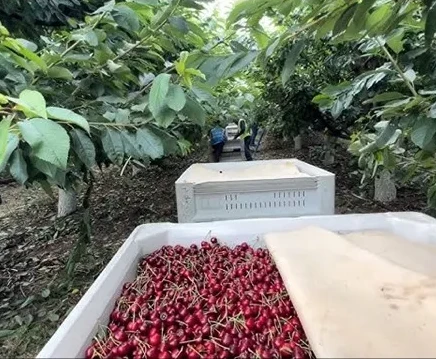A recent Canadian study analyzed three important sweet cherry cultivars, “Sweetheart”, “Staccato”, and “Sentennial”, to identify reliable indicators of maturity for harvest and preservation of organoleptic quality. Traditionally, producers have relied on color as the primary parameter to determine the optimal harvest time, but the findings of this study challenge that practice.
The analyses, conducted between 2018 and 2021, demonstrated that dry matter (DM) is a more accurate indicator of quality than color. Dry matter correlates with soluble solids (SS) and titratable acidity (TA), which are fundamental taste parameters, whereas color, despite being linked to soluble solids, is insufficient for predicting maturity or flavor quality. In fact, cherries of the same color can differ significantly in dry matter, soluble solids, and titratable acidity depending on growth conditions and cultivar.
The study utilized the CTIFL color scale to classify cherries into three maturity levels (3-4, 4-5, and 5-6), harvesting and analyzing the fruit both before and after a 28-day storage period. It was observed that cherries with optimal dry matter levels exhibit lower respiration rates, a factor that helps maintain flavor during storage.
For the “Sweetheart” and “Staccato” cultivars, the optimal dry matter ranges were 22.5-25% and 19.5-22.5%, respectively. For the “Sentennial” cultivar, the ideal range was suggested to be between 20.5% and 22.6%, although further analysis is needed to confirm these values.
The stability of dry matter during storage makes it particularly useful, especially compared to color, which can vary without corresponding changes in organoleptic quality. In contrast, respiration and titratable acidity tend to decrease over time, negatively affecting perceived flavor. Reduced respiration helps preserve higher acidity levels, which are critical for maintaining overall flavor quality.

Environmental differences across growing seasons emerged as another critical factor. For instance, variations in relative humidity significantly influenced dry matter levels between years. This underscores the importance of developing harvest standards specific to each cultivar and adapted to local environmental conditions. Such standards would optimize both product quality and post-harvest management.
This study has practical implications for sweet cherry production. Defining maturity standards based on dry matter rather than color would enable greater precision in harvest timing.
Producers could use technological tools, such as portable spectrometers, to quickly measure dry matter directly in the field. This methodology, which is already available, is also non-destructive and would improve efficiency while reducing losses.
In conclusion, the study demonstrated that dry matter is a better indicator of flavor quality than color, suggesting a shift in the approach to harvesting sweet cherries. Adopting dry matter as the primary parameter would ensure higher product quality, increasing consumer satisfaction and the value of exports. Furthermore, monitoring dry matter could facilitate the adoption of more targeted storage practices.
Source: Ross, K. A., DeLury, N. C., Fukumoto, L., & Forsyth, J. A. (2024). An assessment of the flavour quality attributes of Staccato, Sweetheart, and Sentennial sweet cherry cultivars in relation to maturity level at harvest. Fruit Research, 4(1). https://doi.org/10.48130/frures-0024-0031.
Image: SL Fruit Service
Andrea Giovannini
University of Bologna (IT)
Cherry Times - All rights reserved












